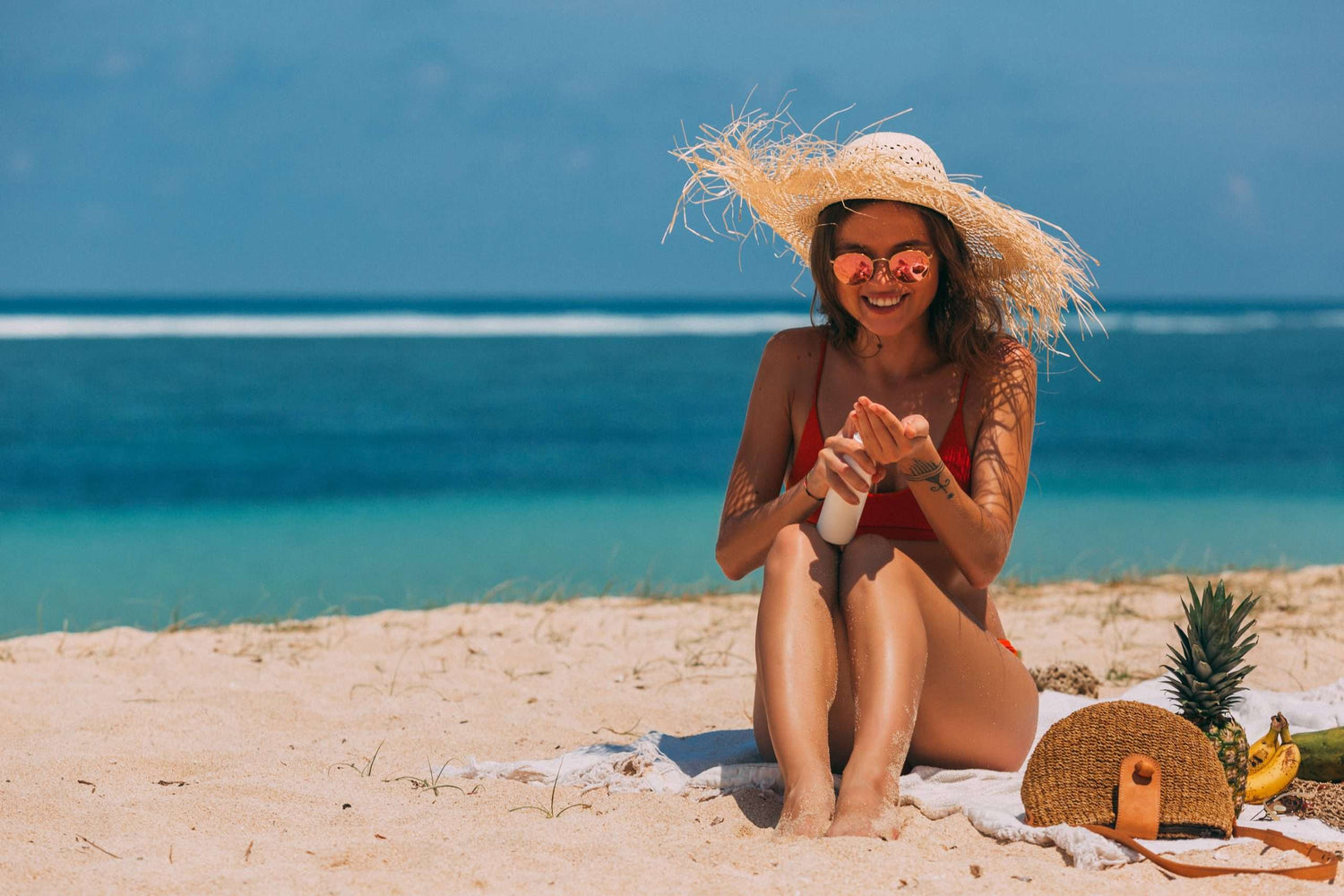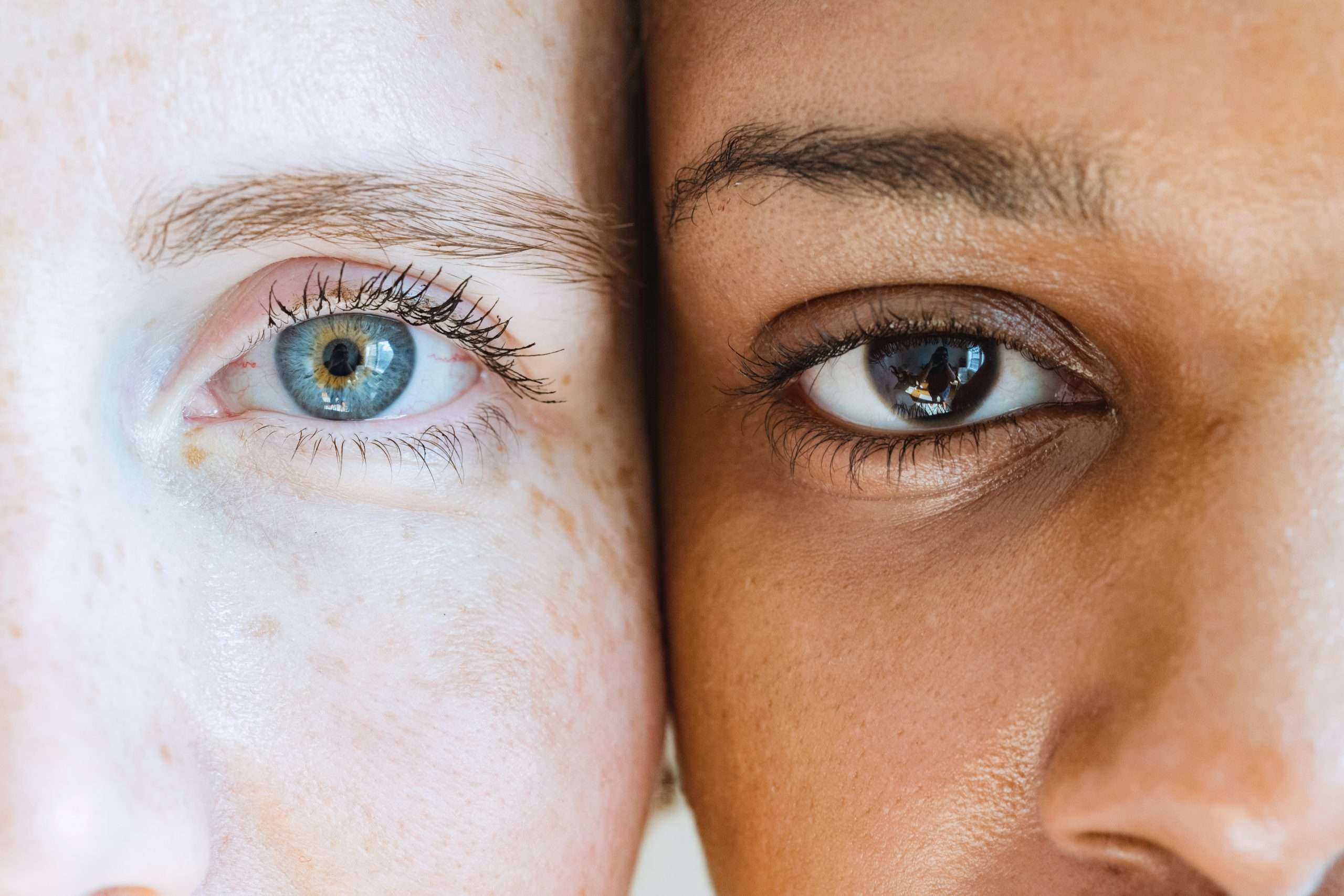Sun, Sea and unfortunately….Sunburn. Yes, the summer months are in full swing and the hot weather and sunny holidays are thankfully once again a part of normal life. Whilst the sun brings the skin (and indeed health in general) the incredibly important Vitamin D we need, it can also have multiple adverse outcomes for those occasions when we slip up on our SPF use or worse still, get caught out in the sun for much longer than our skin can tolerate.
A question I often get asked by patients, journalists, friends and family is not so much how to look after our skin in the sun (thankfully many of us are well up to date on the precautions we need to take to protect our skin) but more, what to do if the dreaded happens? That’s right, what happens when we get burnt? Here’s a detailed look into some of the questions that arise when it comes to sunburn and how to act accordingly. Hopefully this also acts as a good reminder that sunburn comes with some tricky consequences so please always remember to wear SPF and protect, protect, protect.
Once you have been burnt, how quickly does burn take to show?
Sunburn is a radiation burn to the skin. It can happen on sunny days or cloudy days because UV light penetrates through clouds. The skin can burn in as little as 10 minutes and turn red within an hour. The skin can continue to redden over the next 4-24 hours and can take days to heal. In the long term it increases your risk of skin cancer. You cannot always see or feel your sunburn, especially with the glare of the sun and any gentle breeze. It can become much more obvious once you move into the shade or indoors and with the passage of time.
What’s the first thing you should do when you notice sunburn? Is it too late to apply cream at this stage?
Sunburn is an inflammatory response in the tissue caused by DNA damage from the radiation. There are a few things that you can do if you think you have burnt your skin. Apply cool packs to the burnt area try to reduce the heat in the tissue. This will minimise the impact of the burn. If you haven’t got cool packs then have a cool shower/bath and avoid any petroleum jelly products as they trap heat in the skin. I recommend soothing aloe or moisturising shea butter (fragrance free) to moisturise the damaged skin. Stay in the shade with loose clothing on and apply a 1% hydrocortisone cream to reduce inflammation and itch. If you develop large blisters and/or a fever then seek medical attention. In some cases heat stroke accompanies the burn so look out for symptoms like dehydration, confusion, fever, chills, rapid pulse and get help if you notice any of these. Sunburn dehydrates you so drink plenty of fluids and flood your skin with antioxidants so grab an orange and some berries and get munching. Antioxidants will get to work by trying to neutralise the free radicals caused by the sunburn. You can even try some oral ibuprofen and anti-histamines to reduce any tissue swelling and damage. All episodes of sunburn are dangerous and significantly increase your future risk of skin cancer.
What are the most effective ingredients to deal with sunburn? Are products that claim to be after sun more effective than traditional moisturiser?
No product can cure or erase sunburn. Once the damage is done it’s done. But there are some products that can keep you more comfortable and can hydrate the skin while the damage heals. Most after sun lotions are there to help moisturise the skin and calm the inflammation. Th best after sun lotions have a high water content and high aloe vera content. I would recommend a fragrance free aloe gel. Try to avoid anything with oil or rich creams that can occlude the skin and trap heat in and instead opt for hydrating gels. Whilst true clinical effectiveness of aloe is yet to be established we know it has a cooling effect on the skin, has anti-septic properties and is safe to apply to sun burn.
How long should you keep sunburned skin out of the sun for?
Minimum 7 days but I would recommend 2-4 weeks to avoid repeat trauma to the area.
If you start peeling, is it ever okay to pick this? What is happening when your skin peels?
The skin peels after sunburn because the DNA in the skin cells is damaged so the dead cells slough off. Once the skin starts peeling off don’t pick it and don’t exfoliate the skin as these would traumatise the skin further. Just let it slough off naturally and moisturise the area well.
Is it normal for freckles/moles to change in appearance after a day in the sun? What’s normal, and what’s not normal?
Freckles and moles can grow and change shape if they are exposed to sunshine. Freckles in particular can rapidly change shape and size according to sun exposure. Even just a day of sun exposure can make them bigger, darker and more noticeable. Moles also can change shape and size in response to UV exposure but it tends to happen more slowly over weeks and months. UV light can change the structure of a mole and increase the risk of it becoming cancerous. Freckles are more obvious in summer (when the skin produces extra melanin to protect itself from UV radiation) and fade in the winter and then often disappear with increasing age. Moles on the other hand are always present once they form.
A question I often get asked by patients, journalists, friends and family is not so much how to look after our skin in the sun (thankfully many of us are well up to date on the precautions we need to take to protect our skin) but more, what to do if the dreaded happens? That’s right, what happens when we get burnt? Here’s a detailed look into some of the questions that arise when it comes to sunburn and how to act accordingly. Hopefully this also acts as a good reminder that sunburn comes with some tricky consequences so please always remember to wear SPF and protect, protect, protect.
Once you have been burnt, how quickly does burn take to show?
Sunburn is a radiation burn to the skin. It can happen on sunny days or cloudy days because UV light penetrates through clouds. The skin can burn in as little as 10 minutes and turn red within an hour. The skin can continue to redden over the next 4-24 hours and can take days to heal. In the long term it increases your risk of skin cancer. You cannot always see or feel your sunburn, especially with the glare of the sun and any gentle breeze. It can become much more obvious once you move into the shade or indoors and with the passage of time.
What’s the first thing you should do when you notice sunburn? Is it too late to apply cream at this stage?
Sunburn is an inflammatory response in the tissue caused by DNA damage from the radiation. There are a few things that you can do if you think you have burnt your skin. Apply cool packs to the burnt area try to reduce the heat in the tissue. This will minimise the impact of the burn. If you haven’t got cool packs then have a cool shower/bath and avoid any petroleum jelly products as they trap heat in the skin. I recommend soothing aloe or moisturising shea butter (fragrance free) to moisturise the damaged skin. Stay in the shade with loose clothing on and apply a 1% hydrocortisone cream to reduce inflammation and itch. If you develop large blisters and/or a fever then seek medical attention. In some cases heat stroke accompanies the burn so look out for symptoms like dehydration, confusion, fever, chills, rapid pulse and get help if you notice any of these. Sunburn dehydrates you so drink plenty of fluids and flood your skin with antioxidants so grab an orange and some berries and get munching. Antioxidants will get to work by trying to neutralise the free radicals caused by the sunburn. You can even try some oral ibuprofen and anti-histamines to reduce any tissue swelling and damage. All episodes of sunburn are dangerous and significantly increase your future risk of skin cancer.
What are the most effective ingredients to deal with sunburn? Are products that claim to be after sun more effective than traditional moisturiser?
No product can cure or erase sunburn. Once the damage is done it’s done. But there are some products that can keep you more comfortable and can hydrate the skin while the damage heals. Most after sun lotions are there to help moisturise the skin and calm the inflammation. Th best after sun lotions have a high water content and high aloe vera content. I would recommend a fragrance free aloe gel. Try to avoid anything with oil or rich creams that can occlude the skin and trap heat in and instead opt for hydrating gels. Whilst true clinical effectiveness of aloe is yet to be established we know it has a cooling effect on the skin, has anti-septic properties and is safe to apply to sun burn.
How long should you keep sunburned skin out of the sun for?
Minimum 7 days but I would recommend 2-4 weeks to avoid repeat trauma to the area.
If you start peeling, is it ever okay to pick this? What is happening when your skin peels?
The skin peels after sunburn because the DNA in the skin cells is damaged so the dead cells slough off. Once the skin starts peeling off don’t pick it and don’t exfoliate the skin as these would traumatise the skin further. Just let it slough off naturally and moisturise the area well.
Is it normal for freckles/moles to change in appearance after a day in the sun? What’s normal, and what’s not normal?
Freckles and moles can grow and change shape if they are exposed to sunshine. Freckles in particular can rapidly change shape and size according to sun exposure. Even just a day of sun exposure can make them bigger, darker and more noticeable. Moles also can change shape and size in response to UV exposure but it tends to happen more slowly over weeks and months. UV light can change the structure of a mole and increase the risk of it becoming cancerous. Freckles are more obvious in summer (when the skin produces extra melanin to protect itself from UV radiation) and fade in the winter and then often disappear with increasing age. Moles on the other hand are always present once they form.



